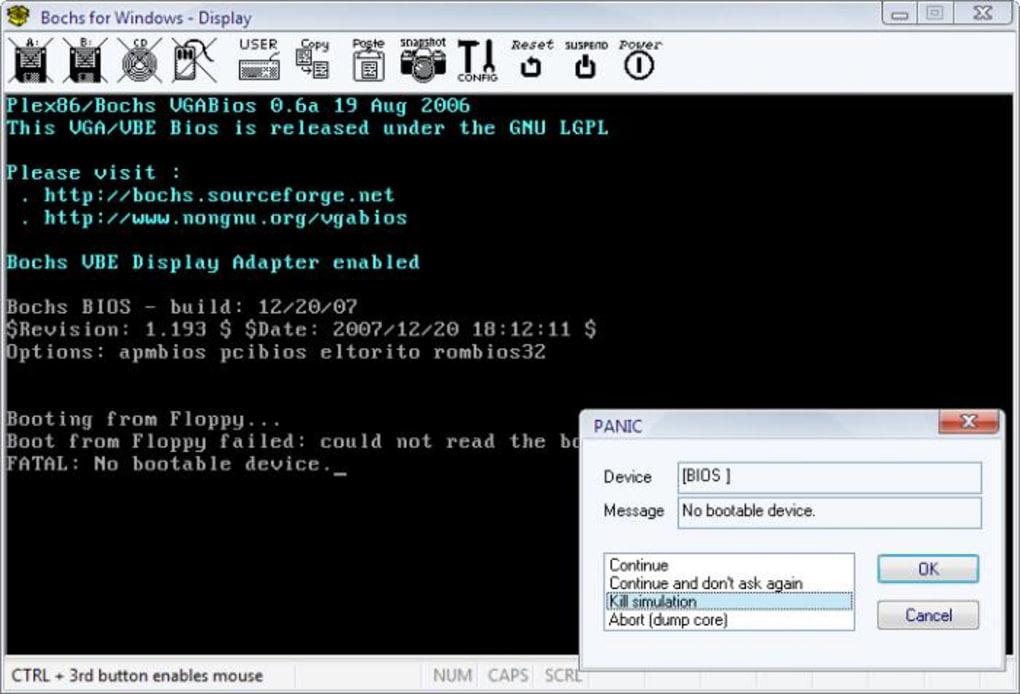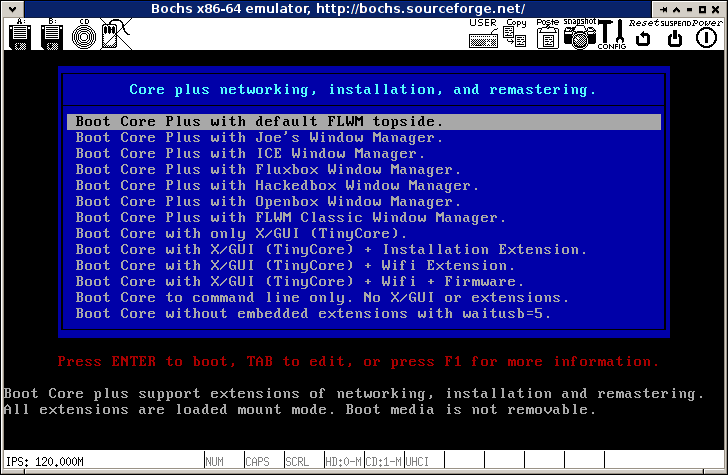
There is a little difference currently between ANSI Forth (or FigForth) and GFOS. Move dictionary (and everything after it) to the longest continuous memory-region and everything goes to the dictionary (files from USB, blocks from disk!?) !? FORGET will remove them later. Rewrite everything that is possible in Forth Get USB working with most of the pendrives YForth was written in C and it helped a lot (it's not an OS): The Memory-map can be found at the beginning of forth.asm. Currently only simple-glyphs are supported (so no composite (or compound glyphs). 16*24 fonts for 1024*768).Ī Truetype-font reader can be downloaded (TTFTest.zip written in python3 with tkinter). bfeditorapp.py ) in order to facilitate the design of charsets for high resolution in GFOS (e.g.
#Bochs docs install
Boots from winchester(also from USB pen-drive), floppy, CD-with-floppyemulation (from floppy and disk also with Bochs)Ī Bitmap Font Editor is also available (BFEditorTk.zip, written in python 3.5.1 install python3 and python3-tk packages on Debian or Ubuntu start with python3. Can play (uncompressed) wav, and can display bmp-s USB (EHCI, UHCI so USB2.0) pendrive support (sectors/files) forth.asm in the source is very well commented and the source of YForth should also be checked (it's written in C and can be downloaded from this page). The hash-table is 20000 long with a list in each slot (20000*16). There is one dictionary and one hash-table (djb2 algorithm). The double-cells was a good idea in the 16-bit world. The main things that are missing are the double cells, value, locals and code. It has most of the words from ANSI Forth.

This OS doesn't use the mouse (it's best to unplug it). The bochs-config file can be found in gfos.zip

It has been tested with emulators (BOCHS and QEMU) and on real hardware (an old desktop and on a laptop: Dell D820). The 32-bit GFOS (Graphical Forth Operating System) was written entirely in assembly with NASM (Intel, minimum PENTIUM).


 0 kommentar(er)
0 kommentar(er)
